

|
|
Three Hats for Lisa AKA One Day in London
R2 - United Kingdom - Network Review written by and copyright: Paul Lewis (16th August 2013). |
|
The Film
 Three Hats for Lisa (Sidney Hayers, 1965) 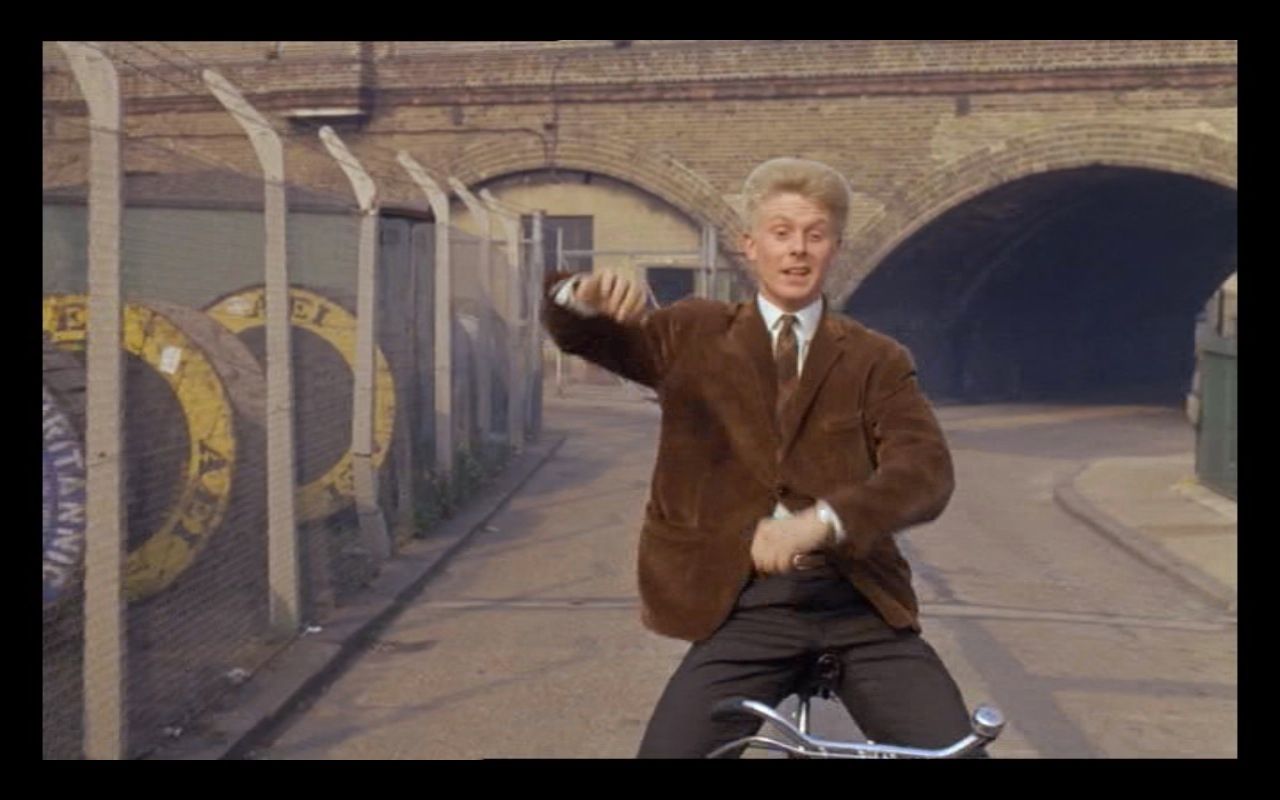 Written by the team of Leslie Bricusse (credited with providing the story, music and lyrics) and Carry On… scribe Talbot Rothwell, and directed by Sidney Hayers, Three Hats for Lisa (Sidney Hayers, 1965) is a youth-oriented musical comedy which offers a light-hearted view of British youth culture that provides an interesting comparison with both British New Wave films and similar British musicals produced in the mid-1960s (such as Richard Lester’s A Hard Day’s Night, 1964). In his autobiography, director of photography Alan Hume notes that Three Hats for Lisa was ‘a small-scale film, with a small story’ which somehow managed to attract a number of stars: Joe Brown, Sid James, Una Stubbs, Peter Bowles and Sophie Hardy (Hume, 2004: 69). Written by the team of Leslie Bricusse (credited with providing the story, music and lyrics) and Carry On… scribe Talbot Rothwell, and directed by Sidney Hayers, Three Hats for Lisa (Sidney Hayers, 1965) is a youth-oriented musical comedy which offers a light-hearted view of British youth culture that provides an interesting comparison with both British New Wave films and similar British musicals produced in the mid-1960s (such as Richard Lester’s A Hard Day’s Night, 1964). In his autobiography, director of photography Alan Hume notes that Three Hats for Lisa was ‘a small-scale film, with a small story’ which somehow managed to attract a number of stars: Joe Brown, Sid James, Una Stubbs, Peter Bowles and Sophie Hardy (Hume, 2004: 69).
The film stars singer Joe Brown as Johnny Howjego, a working-class Londoner who persuades his friends Flora (Una Stubbs) and Sammy (Dave Nelson), and initially-reluctant local cab driver Sid (Sid James), to take the day off work to greet visiting Italian starlet Lisa Milan (Sophie Hardy). (At this stage in his career, Sid James had plenty of experience playing a London cabby, thanks to his roles in the 1963 film Carry on Cabby and the BBC sitcom Taxi!, 1963-4.) Milan, who hails from Naples, is arriving in London for the premiere of her new film One Day in Rome. Frustrated by her pressured greeting from the British press, and the stuffy attitudes of those who have been charged with caring for her during her stay in London (including Pepper, played by Peter Bowles), Milan does the proverbial ‘runner’, rapidly exiting her limousine and diving into Sid’s black cab. She asks Johnny and his friends to take her on a tour of London, and asks that they help her acquire three hats, as souvenirs, associated with the city: a London bobby’s helmet; a bowler hat; and a soldier’s bearskin hat. 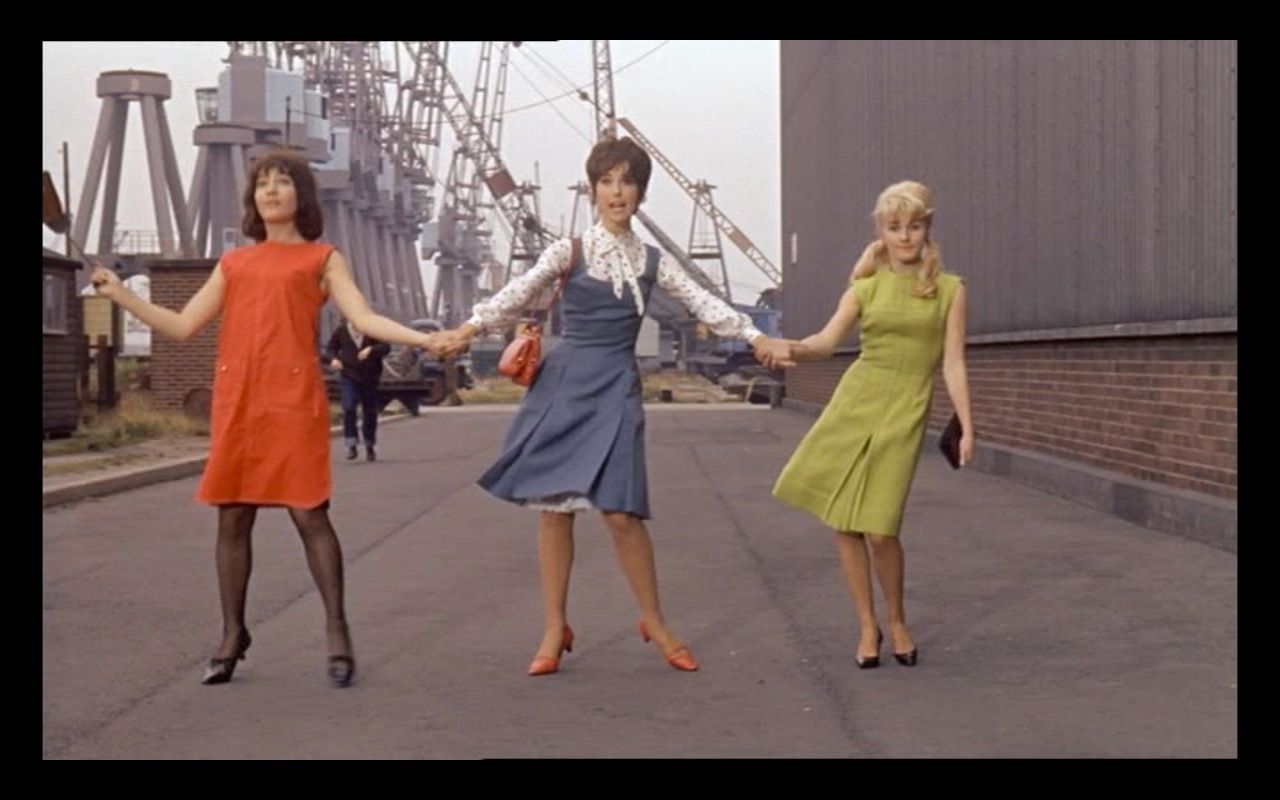 The film opens in a similar fashion to many 1960s youth films, including Clive Donner’s Some People (1962), which Network have also recently released. Johnny is introduced riding his bicycle through the streets of London whilst jauntily singing ‘This is a Special Day’. Meanwhile, on the docks, Flora and two of her female friends discuss boyfriends (‘The Boy on the Corner of the Street Where I Live’). ‘Every girl has a dream boy’, Flora sings: ‘The boy on the corner of the street has a gleam in his eye’. They dance in the street, the sequence offering the first showcase of the film’s stunning choreography by Gillian Lynne. At this point, the film offers a strange juxtaposition of very unglamorous working-class urban locations and Hollywood-style song-and-dance numbers. The film opens in a similar fashion to many 1960s youth films, including Clive Donner’s Some People (1962), which Network have also recently released. Johnny is introduced riding his bicycle through the streets of London whilst jauntily singing ‘This is a Special Day’. Meanwhile, on the docks, Flora and two of her female friends discuss boyfriends (‘The Boy on the Corner of the Street Where I Live’). ‘Every girl has a dream boy’, Flora sings: ‘The boy on the corner of the street has a gleam in his eye’. They dance in the street, the sequence offering the first showcase of the film’s stunning choreography by Gillian Lynne. At this point, the film offers a strange juxtaposition of very unglamorous working-class urban locations and Hollywood-style song-and-dance numbers.
Johnny arrives at the cinema; outside, there is a cardboard cut-out of Lisa Milan. He caresses and kisses the cut-out, and when he leaves the caretaker exits the building and wipes the cut-out’s face. When Johnny tells Flora and Sammy of Lisa’s impending arrival, Flora asks dryly, ‘What do you expect us to do, meet her at the airport?’ However, this is exactly what Johnny would like to do, and he persuades his friends to pretend that they have a particularly exotic strain of flu so that they might accompany him. ‘Listen, mate. Anything you think you shouldn’t be doing, nine times out of ten it’s the right thing, I’m telling ya’, Johnny tells Sammy when the latter expresses doubts about bunking off work to see the actress. Of course, when Lisa arrives and escapes from the clutches of Pepper (who shows his incompetence when, greeting Lisa from the plane, he falls off the steps in front of the press), she soon intuits that Flora is in love with Johnny; and Johnny is blinded to Flora’s graces by his infatuation with Lisa. At the end of the film, Johnny’s eyes have been opened and as he and Lisa part company, and Lisa invites him to the premiere that evening, Johnny instead suggests that ‘I think I’ll take Flora dancing tonight’. Writing about changes within the ‘British pop music film’ during the mid-1960s, Stephen Glynn argues that in Three Hats for Lisa, ‘Joe Brown, once a monochrome reminder to the Beatles of dubious sexual politics, was now a Cliff colour epigone, chivalrously showing his favourite female film star around London’ (2013: 115). It is certainly true that Three Hats for Lisa has a similar jaunty energy to Cliff Richard’s most famous musical films The Young Ones (Sidney J Furie, 1961) and Summer Holiday (Peter Yates, 1963). However, it also offers a very interesting representation of London. 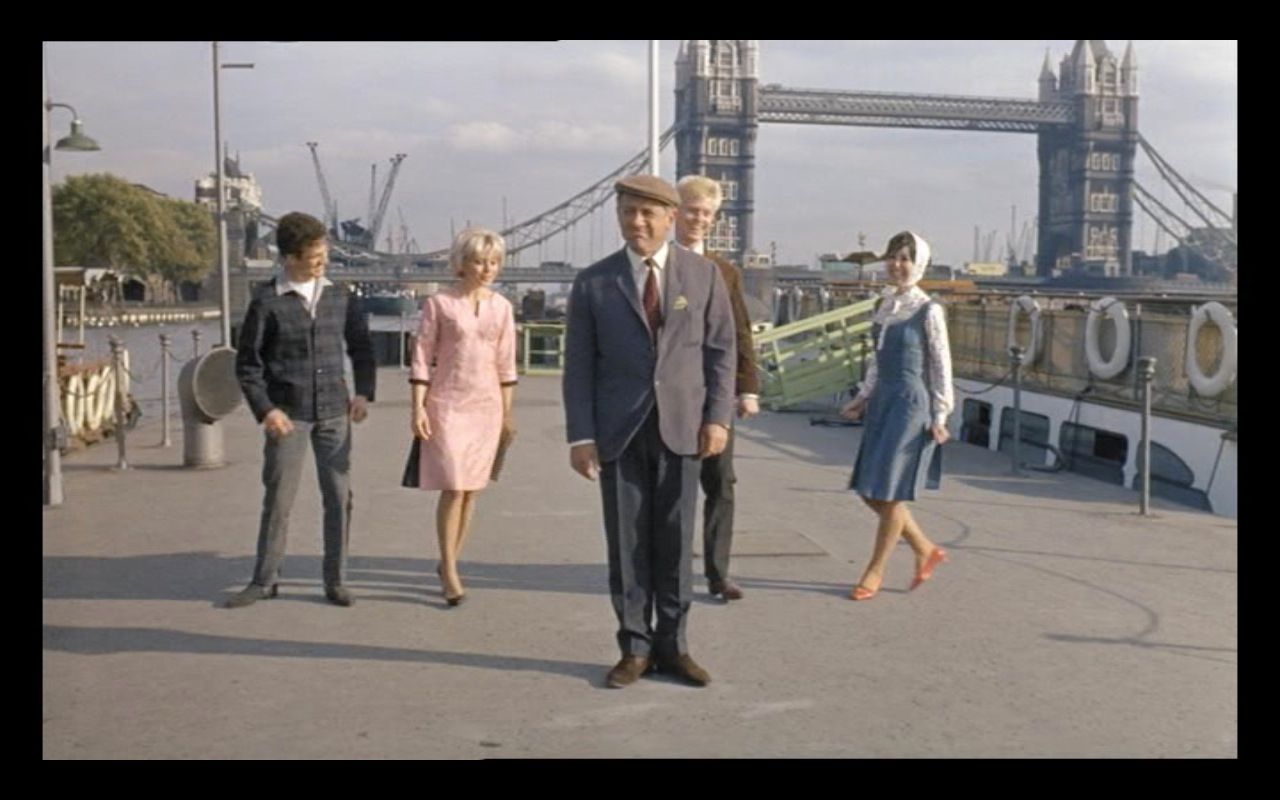 In The British Musical Film, John Mundy contrasts Three Hats for Lisa with the 1963 film What a Crazy World, which also starred Joe Brown. For Mundy, What a Crazy World depicts a London that is still ‘a regionalised London, its distinctly localised references and inhabitants a world away from the more cosmopolitan metropolis of the later 1960s’ (2007: 200; emphasis in original). On the other hand, Three Hats for Lisa eschews the monochrome photography ‘and realist aesthetic which dominates a significant element of What a Crazy World’ and ‘seems to have been imbued with that “zany optimism” and hedonistic frivolity which marks the shift in sixties British cinema away from “New Wave” towards “Swinging London”’ (ibid.: 203). The film’s opening sequence, which begins with a series of panoramic shots of the city’s skyline and Joe Brown, riding a bicycle through the streets, singing ‘This is a Special Day’; for Mundy, this opening sequence ‘indicate[s] an increasingly glamorous, attractive metropolis driven by the pursuit of leisure and entertainment’ (ibid.). In The British Musical Film, John Mundy contrasts Three Hats for Lisa with the 1963 film What a Crazy World, which also starred Joe Brown. For Mundy, What a Crazy World depicts a London that is still ‘a regionalised London, its distinctly localised references and inhabitants a world away from the more cosmopolitan metropolis of the later 1960s’ (2007: 200; emphasis in original). On the other hand, Three Hats for Lisa eschews the monochrome photography ‘and realist aesthetic which dominates a significant element of What a Crazy World’ and ‘seems to have been imbued with that “zany optimism” and hedonistic frivolity which marks the shift in sixties British cinema away from “New Wave” towards “Swinging London”’ (ibid.: 203). The film’s opening sequence, which begins with a series of panoramic shots of the city’s skyline and Joe Brown, riding a bicycle through the streets, singing ‘This is a Special Day’; for Mundy, this opening sequence ‘indicate[s] an increasingly glamorous, attractive metropolis driven by the pursuit of leisure and entertainment’ (ibid.).
Mundy also observes that the airport where Brown and his friends greet Lisa, and where they also say goodbye to her, is something of a transitional space which ‘marks off internationalised, cosmopolitan London from Johnny’s earthly working-class London roots’ (ibid.). When Lisa hitches a ride in Sid James’ cab, and Brown and company take her on a tour of ‘London Town’, the film offers ‘a cinematic display of tourist London’ that takes in the city’s most famous tourist landmarks: Tower Bridge, Saint Paul’s Cathedral, Hyde Park. On the other hand, the film still contains a depiction of London as ‘partly rooted in work’, showing the lives and occupations of the city’s working class inhabitants and featuring a narrative in which Brown and his friends take the European starlet on a tour of London’s ‘urban-industrial dockland locations’ (ibid.). Johnny insists on showing Lisa round the working class district of Bermondsey, where Sid sings one of the film’s most unusual songs: ‘Oh, Bermondsey/That’s home to me/I’m longing for the moment when I shall see/The happy, laughing, razor-slashed faces of the people I love/Back home in Bermondsey/I wanna be/Because the smuggled booze they got is practically free/And how I miss the sparkle of the gasworks and the people I love/I’ve so many childhood memories/Of that quaint old-fashioned town/There was a quaint old-fashioned schoolhouse/Till the schoolkids burnt it down/Oh gee, oh gosh, I’d like to cosh that copper you see/Who sent away to Holloway, to Brixton/All the people I love’. To this, Lisa responds, ‘Sounds just like Napoli’. (‘That’s rough as well’, Sid interjects.) ‘That’s home to me’, Lisa sings. (‘It’s rough as hell’, Sid adds.) This ode to ‘the happy, laughing, razor-slashed faces of the people we love’ is arguably one of the most bizarre musical numbers in a British film of the 1960s. Later in the film, Brown and his friends fry sausages in the unfinished restaurant at the top of the newly-erected Post Office Tower; Mundy argues that ultimately, the film offers a portrait of ‘a London in which the connections between rich and poor, Hyde Park and Bermondsey, are unruptured, [the city’s] diversity to be celebrated, not condemned’ (op cit.: 204). Cut status is uncertain on this one. The BBFC lists the original running time as 103:44, which in PAL standard would equate to around 99:30 mins. The PAL video released by Warner in 1990 ran for 95:04 mins, according to the BBFC. The version of the film on Network’s DVD runs for 95:45 PAL (which, in film terms, equates to a running time of approximately 99:40). In the absence of more information, very little can be said other than this DVD (and the previous Warner VHS release) appears to be four minutes shorter than the version originally classified for cinema exhibition by the BBFC in 1965. (Any more information about this may be submitted to us via our forums – where it will be greeted with open arms.)
Video
The film was shot on Eastmancolor, and the presentation here is very colourful, with strong contrast. Detail is crisp throughout. In fact, this is a very handsome presentation of the film. 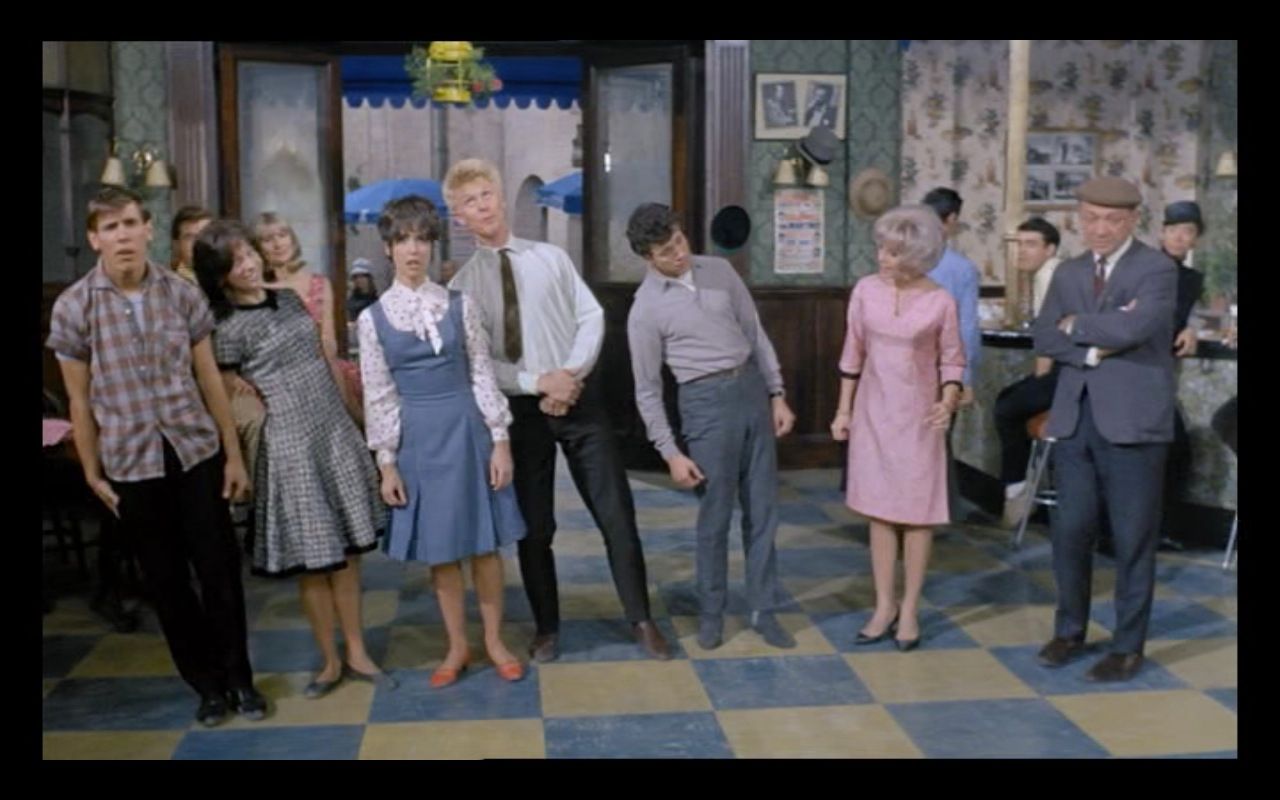 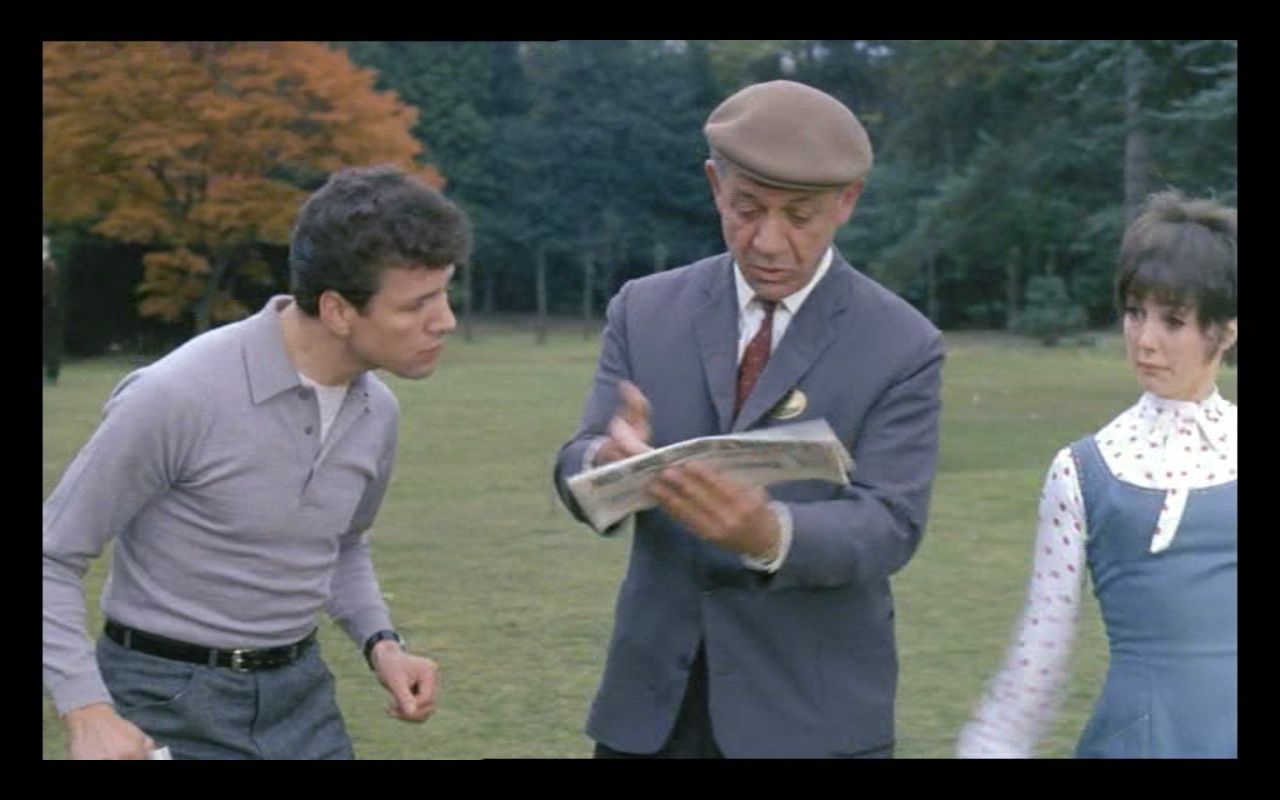
Three Hats for Lisa is presented in its original aspect ratio of 1.66:1, with anamorphic enhancement.
Audio
Audio is presented via a two-channel stereo track (in English). This is clean and clear throughout. Sadly, no subtitles are provided.
Extras
The disc contains a trailer (2:55), which largely focuses on Sid James’ involvement, and a stills gallery (1:04).
Overall
 Three Hats for Lisa is a likeable, frothy musical comedy with some great choreography and some utterly bizarre musical numbers. It offers an interesting depiction of London youth, and to some extent it could be considered transitional, bridging the realism of the British New Wave and the glamour of the Swinging London films. This disc contains a very handsome presentation of the film, but it could have benefited from a little more contextual material. Three Hats for Lisa is a likeable, frothy musical comedy with some great choreography and some utterly bizarre musical numbers. It offers an interesting depiction of London youth, and to some extent it could be considered transitional, bridging the realism of the British New Wave and the glamour of the Swinging London films. This disc contains a very handsome presentation of the film, but it could have benefited from a little more contextual material.
References: Glynn, Stephen, 2013: The British Pop Music Film: The Beatles and Beyond. London: Palgrave MacMillan Hume, Alan, 2004: A Life Through the Lens: Memoirs of a Film Cameraman. London: McFarland Mundy, John, 2007: The British Musical Film. Manchester University Press This review has been kindly sponsored by: 
|
|||||

|